Note
Click here to download the full example code
Tensor meshes¶
Tensor meshes (TensorMesh) are defined by a vectors of
cell widths in each dimension. They can be defined in 1, 2, or 3 dimensions.
import numpy as np
import discretize
In the simplest case, you can instantiate a tensor mesh by providing the number of cells in each dimension. This assumes that the extent of each dimension is unity.
ncx = 16
ncy = 16
tensor_mesh = discretize.TensorMesh([ncx, ncy])
tensor_mesh.plotGrid()
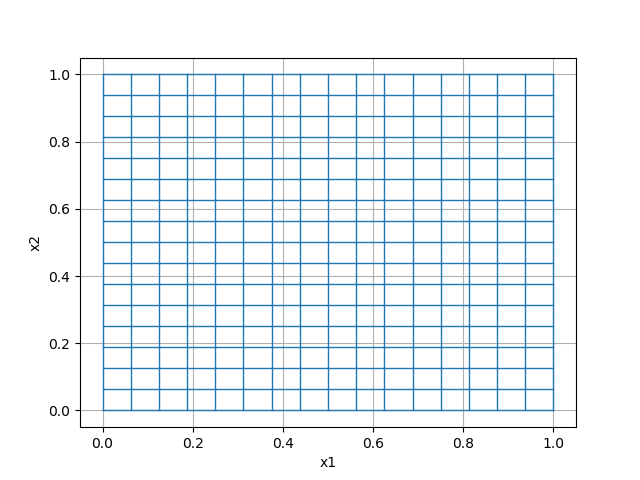
If instead, you want a mesh that has 16 cells in each dimension and the width of each cell is 1 (so that the extent of the domain is 16), you can instead specify the vector of cell widths.
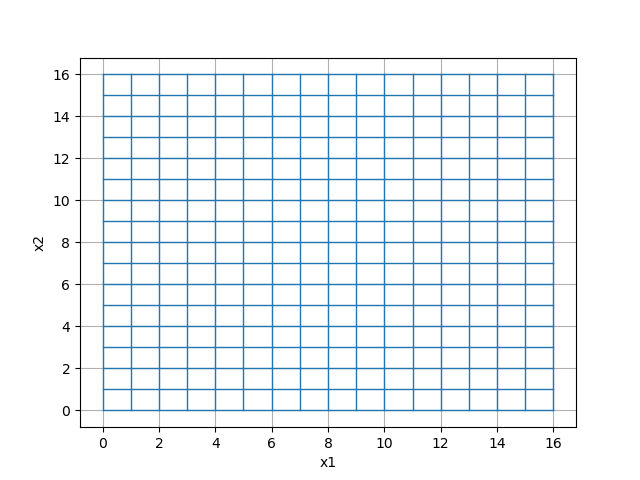
In one lin, the above mesh can be specified by providing tuples to TensorMesh (cell_size, number_of_cells)
cell_size = 1
tensor_mesh2b = discretize.TensorMesh([
[(cell_size, ncx)], # hx
[(cell_size, ncy)] # hy
])
The widths of the cells can be variable. For example when solving problems in electromagnetics, it is necessary to add “padding cells” which expand near the boundary so that we satisfy the boundary conditions
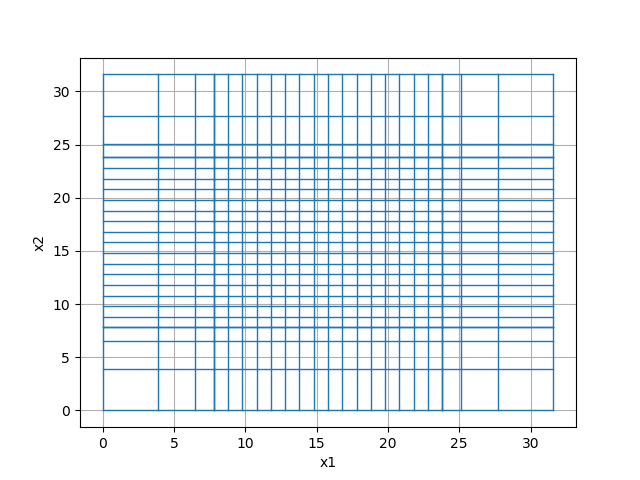
Since it is common to include padding in meshes for numerical simulations, we simplify the above steps by allowing you to provide a list of tuples describing parts of the mesh. When there is a third number in the tuple, it refers to the factor by which we increase the cell size. If the number is negative, the tensor is flipped so that the widest cells are first.
hx4 = [
(cell_size, n_padding_cells, -padding_factor), # padding on the left
(cell_size, ncx), # core part of the mesh (uniform cells)
(cell_size, n_padding_cells, padding_factor), # padding on the right
]
hy4 = hx4
tensor_mesh4 = discretize.TensorMesh([hx4, hy4])
tensor_mesh4.plotGrid()
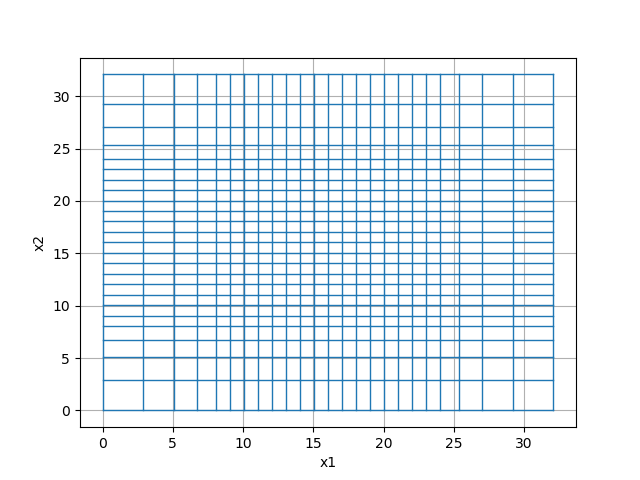
The origin of the mesh can be moved by assigning the x0 variable. When a mesh is instantiated, the x0 can be provided as a keyword. Alternatively, it can be set by setting the x0 property after a mesh has been created. Here, we will position the origin in the center of the mesh created in the previous step.
x0 = [-tensor_mesh4.hx.sum()/2, -tensor_mesh4.hy.sum()/2]
tensor_mesh4.x0 = x0
tensor_mesh4.plotGrid()
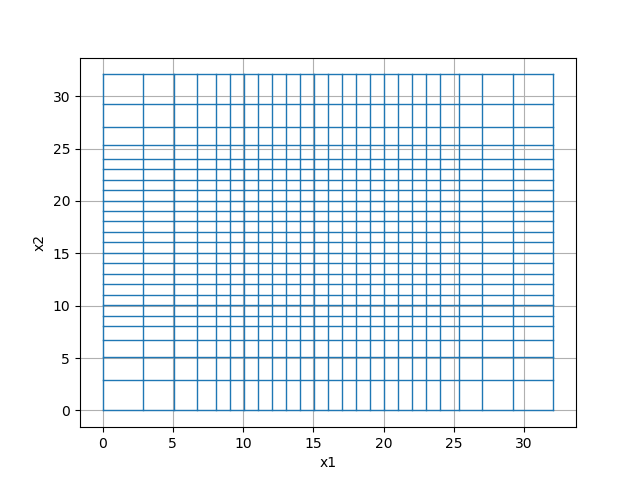
The above is equivalent to passing x0=’CC’ which states that you want both the x and y directions of the mesh to be centered. A ‘N’ will make the entire mesh negative, and a ‘0’ (or a 0) will make the mesh start at zero.
tensor_mesh4b = discretize.TensorMesh([hx4, hx4], x0='CC').plotGrid()
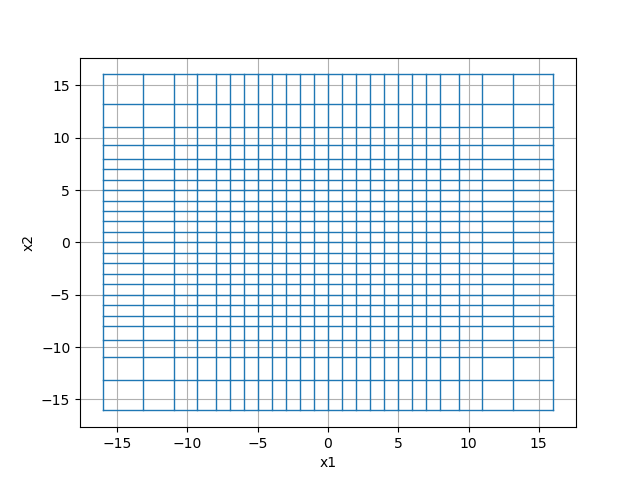
Total running time of the script: ( 0 minutes 0.136 seconds)